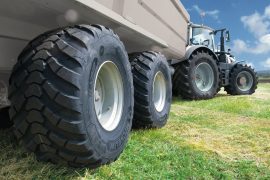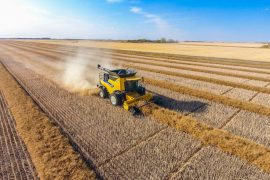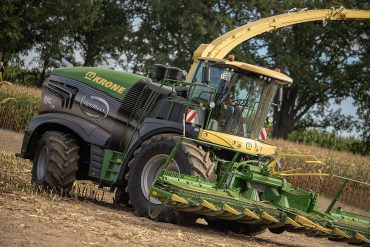In 2018, CEMA set up a dedicated project team to assess and follow-up the developments, impact and needs of robotics in agriculture. Numerous established ag machinery manufacturers and also new players are investing and looking into the agricultural sector as most promising on the expected positive transformation due to Artificial Intelligence and autonomous vehicles like a positive return of investment, a solution for the growing shortage of skilled labour and a decrease of the many safety risks.
Cedric Seguineau, Head of the HSQE dpt of Naïo Technologies a French SME developing robots for agriculture to carry out weeding tasks, and Chairman of the CEMA Project Team on Robotics in Agriculture answers to 5 questions on this new trend for our industry and the farming sector.
CEMA: What are the challenges in agriculture for which robots can be the solution, now and in the coming years?
Naïo: The agriculture sector is facing several challenges. Jobs are rough, with inherent many safety risks on the workspot, and physical and psychological constraints. Combined with an overall aging of the population, most countries experience a shortage of labour and skilled labour.
The agricultural sector is considered as a contributor to global warming and the intensive production of crops has its toll. The quality of the soil is under pressure from the many operations from machinery and current practices like herbicide spraying affects biodiversity. Certainly, in relation to crop maintenance, practices and tools can and must evolve to minimise their ecological footprint and make agriculture more sustainable.
Our mission at Naïo, is to actively contribute to the research and implementation of solutions enabling these sustainable practices, and we think robots are part of that solution.
First, the automation of tough and toilsome tasks is an answer to labour shortage. Directly, by providing solutions where hardly a few people are ready or skilled anymore to do the job. It is expected that taking away the human driver/operator, many safety risks will be eliminated but the sector is too young to make the analysis on the reduction of old and creation of new risks. By rejuvenating the sector with people interested in high-tech and by proving agriculture is also using state-of-the-art digital, robotics and other new technologies, we shall be able to attract more talent.
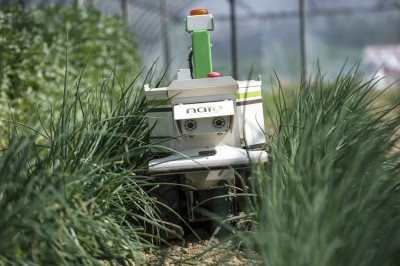
Secondly, encouraging a more sustainable economy through services model is also part of Naïo’s objectives.
And at least as important, we believe robots may have a very positive impact for ecological transition. With new features and automated functions, practices and technical regimen can evolve. Lighter, more often on the field, autonomous mobile machines are able to adapt their action to each plant, are also data providers, which may be coupled with big data and other numerical solutions to make precision farming a reality. The modularity of robots is also a key to match farmers’ needs. Where the farmers and the crops adapted themselves to available tools and legacy, robots and their functions are now tuned to the needs and specificity of each crops and lands.
CEMA: How do you see the acceptance of robots in EU agriculture? Is it taking off or are other regions in the world more open to include them in daily farming practices? Is it due to more legal openness to accept robots or the overall mindset of farmers?
Naïo: Naïo has sold robots specialized in mechanical weeding adapted for vegetable crops (market farmer, and large-scale farms) and vineyards for five years now, mainly in Europe and North America. Up to now, even if a growth was noticed, new automated technologies, robotics data management or the new human-machine relationship continues to raise concerns among Europeans.
Certainly on privacy European citizens are especially sensitive to that, as shown by the implementation of the GDPR. If we do not consider these concerns, they will remain obstacles for mass adoption of these technologies.
A robust set of common requirements is part of the answer, but we are convinced it will not be enough. We must focus on making the technology transparent, readable, and understandable. It will take time, to train people and raise awareness. The wide deployment on the fields may also be key to prove robots are no longer an unknown future but a factual reality. We pay special attention to third-parties and independent initiatives that will allow everyone to build an opinion and evaluate pros and cons. At least, the legal framework must also provide an answer to ensure homogeneous behaviour of the robots in the fields at global level. If the functions are very specific, interactions with humans can be standardized to facilitate the adoption of robotics. We believe the legal framework is suitable for robotics, but the details are missing. That explains our interest and active contribution to the CEMA project team to develop common global requirements for autonomous machines of all sizes, shapes and fields of application. We do this in active collaboration with colleagues from the US and Japan.
From another perspective, we are more and more solicited by occupational Safety and Health offices and other related administration. It is a good point, showing the growing interest from these countries. The recent OECD activity on agricultural robotics also underlines the interest in robotics gets a worldwide dimension now.
Naïo: To my mind, feedback may be categorized as follows:
First, the quality of the work is the primary concern. If a robot is bought to do a job like weeding, the quality is expected to be as good as the same operation done by traditional way. We are proud to say feedbacks are very positive in that regard. This rewards the years of development in our engineering teams.
The second would be about autonomy. The good quality of the work leads to huge expectations in terms of autonomy. We have a roadmap to raise the level of autonomy and totally free the operator from the active supervision of the autonomous tasks in the coming years. It will take time and due to the related safety and security risks, this is something essential for us to take care of. Safety will greatly depend on crops and farm configuration, and the risk assessment is carried out on a case-by-case basis as long as type-C standards (standards with all the detailed necessary safety requirements for machines of particular designation) are not in place.
CEMA: What is the feedback users of robots report to you as manufacturer?
Naïo: To my mind, feedback may be categorized as follows:
First, the quality of the work is the primary concern. If a robot is bought to do a job like weeding, the quality is expected to be as good as the same operation done by traditional way. We are proud to say feedbacks are very positive in that regard. This rewards the years of development in our engineering teams.
The second would be about autonomy. The good quality of the work leads to huge expectations in terms of autonomy. We have a roadmap to raise the level of autonomy and totally free the operator from the active supervision of the autonomous tasks in the coming years. It will take time and due to the related safety and security risks, this is something essential for us to take care of. Safety will greatly depend on crops and farm configuration, and the risk assessment is carried out on a case-by-case basis as long as type-C standards (standards with all the detailed necessary safety requirements for machines of particular designation) are not in place.
CEMA: In terms of technical requirements, what are the most critical points to cope with (safety issues, plants recognition, autonomy levels)? How can the work ongoing within CEMA offer solutions?
Naïo: There is wide range of solutions, even if we consider mobile machinery only. Size, speed, access to the working tool, etc. are so different from a machine to machine that the risk assessment will identify different situations as more safety critical.
Even if the criticality of risks will vary from one solution to another, overall the automation of mobile machinery generates new risks to deal with: the risk of interaction with obstacles in the surroundings which could be plants, other vehicles but also humans and animals, and the risk to leave the designated area of performing the automated work. Other risks shall also be considered, like the risk to cause unintentional damage to the crops. And the technical solutions to cope with these risks depend largely on the risk assessment.
CEMA work is of high importance: the target remains to provide type-C standards to manufacturers in order to facilitate the development of new robots that meet the common safety and security levels. But as previously mentioned a very important element is to standardize the way in which machines shall interact with humans and the transfer of responsibilities between operator and automated machine. By the use of basic standards, we can help farmers to anticipate on the machine behaviour and this will facilitate a faster adoption of new technology by farmers.
Within the CEMA Project Team dealing with robotics in agriculture, we try to focus on these general features which must be common to any function that could be automated. We try to establish a comprehensive framework to deal with automated functions embedded on traditional equipment as new autonomous mobile robots like Naïo’s solutions. We also focus on ethical aspects common for any manufacturer of autonomous machinery, and we try to establish a common understanding of what are levels of autonomy. We consider it is the missing basis today to help and deploy massive work on the next generation of Type-C standards. I am convinced these works are also highly valuable to help the European Commission in its project to revise the Machinery Directive in order to take into account the specific risks associated with the use of robotics.
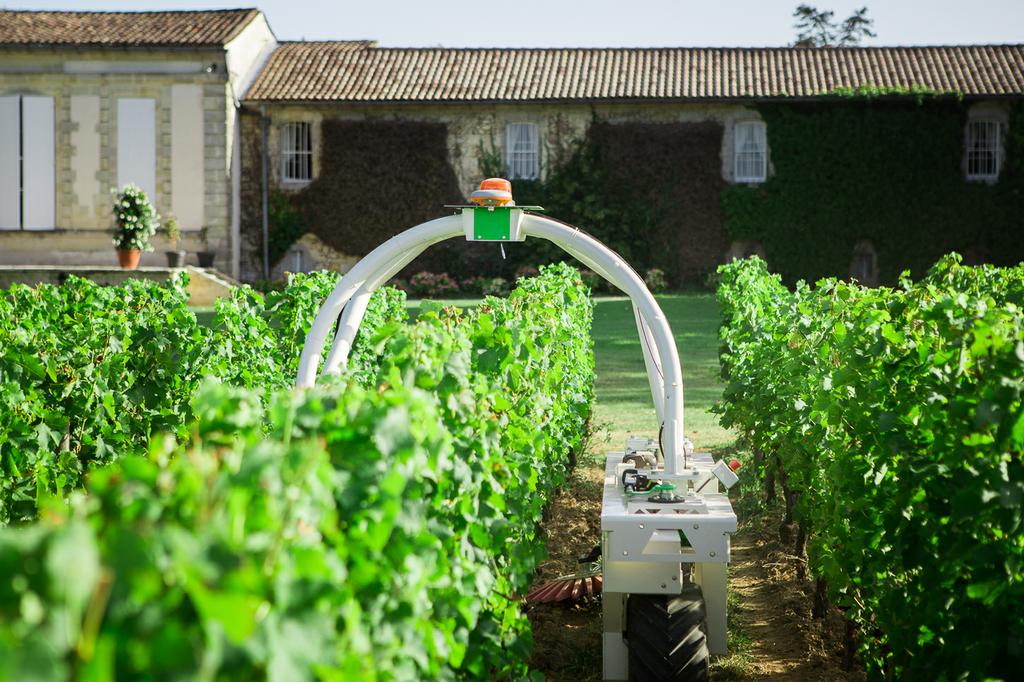
CEMA: The European Commission has recently published its ambitious AI strategy. In your opinion, what would be needed to keep EU companies as innovative leaders on AI development in agriculture and other sectors? Is there a specific need for AI in robotics that can make the difference? Is there a need for a legal framework?
Naïo: The European Commission strategy is very interesting. It proposes a legal approach to deal with concerns about Artificial Intelligence. That technology raises fears, mainly because it encompasses a very wide range of applications, but main focus of the general audience is on the risks of cognitive awareness of an AI that would take decisions without knowing anything about ethics. From my understanding, the best approach is to consider all the used new technologies (Robotics, AI, Internet of Things) as combined applications with specific risks. With AI driven machines, the burden of proof may be reversed, because of the rising complexity to explain and understand the behaviour of the AI in case of accidents. It implies new duties for manufacturers, and certainly the deployment of new technical solutions. EU companies may have interest to work together, and very close to the European Commission to anticipate and explain what could be feasible and what could be too difficult to deploy.
I’m not an expert on AI, but it seems one of the ways to handle large, complex datasets. Especially in open environment like fields, were crops change drastically depending on their growth. I guess keeping afloat EU companies, working with AI in agriculture, means focusing on how to build and master these databases. First, by allowing data collection in a legal framework which protect farmers, and then by working on large-scale collection solutions, transfer, and storage solutions of data. We need to work with IT companies on that subjects. Autonomous mobile machine could be a very convenient way to empower the data collection rate.


